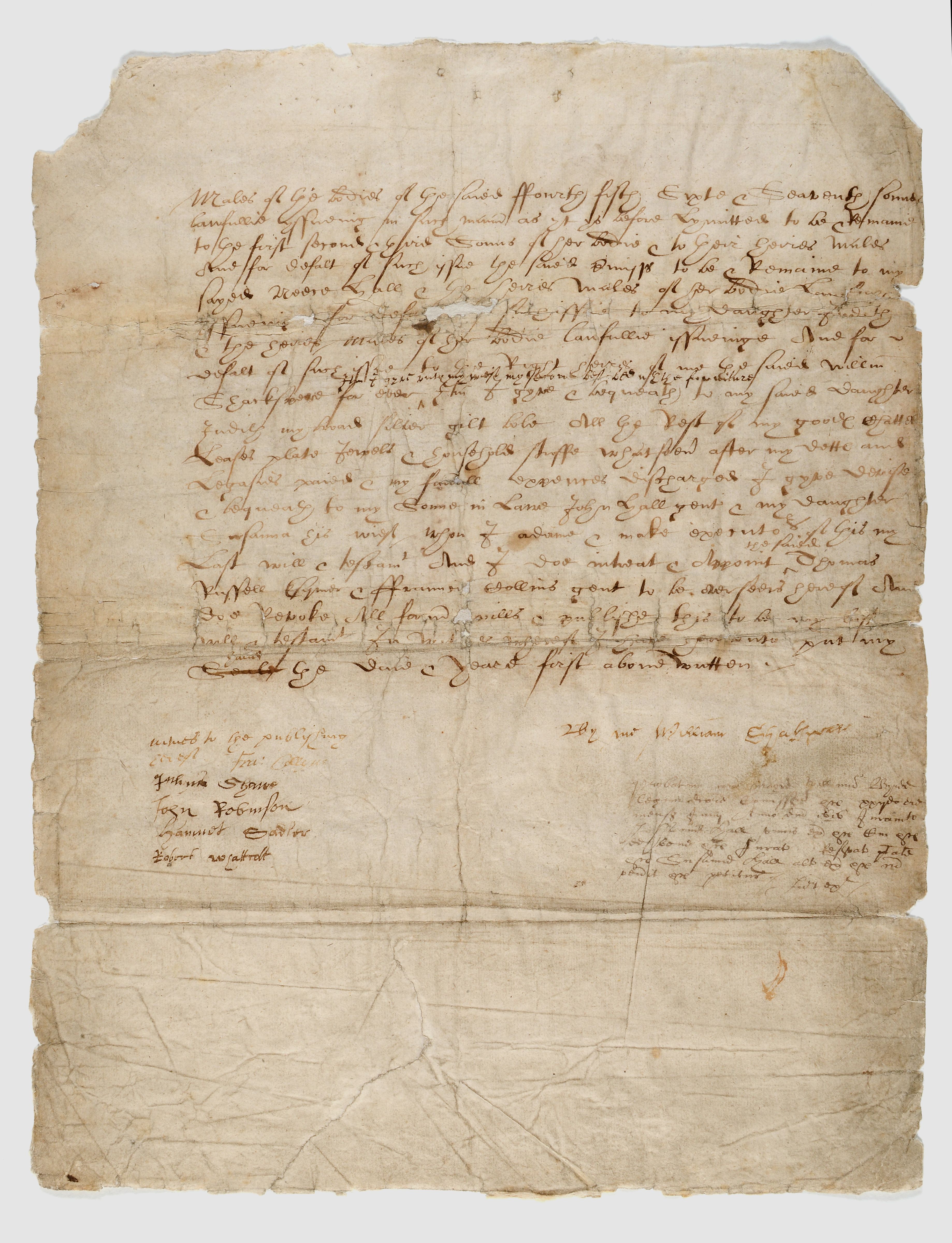|
Kafkania Pebble
The Kafkania pebble is a small rounded river pebble about long, with Linear B symbols and a double axe symbol inscribed on it. It was found in Kafkania, some north of Olympia, on 1 April 1994 in a 17th-century BC archaeological context. If it were genuine, it would be the earliest writing on the Greek mainland, and by far the earliest document in Linear B. The Kafkania Pebble would also have had to exist two or more centuries before the earliest of the Linear B Documents. However, it is in all probability a modern forgery and a hoax. Inscription The pebble bears a short inscription of eight syllabic signs in Linear B, possibly reading '. The reverse side shows a double-axe symbol. The inscription is identified by some to be in Mycenean Greek, but that identification remains disputed. It has been suggested that such an isolated example of Linear B script indicates, at best, an early stage of Mycenaean writing at the time of origin. G. Owens suggests that the inscription is Minoan ... [...More Info...] [...Related Items...] OR: [Wikipedia] [Google] [Baidu] |
Boustrophedon
Boustrophedon is a style of writing in which alternate lines of writing are reversed, with letters also written in reverse, mirror-style. This is in contrast to modern European languages, where lines always begin on the same side, usually the left. The original term comes from grc, βουστροφηδόν, ', a composite of , ', "ox"; , ', "turn"; and the adverbial suffix -, -', "like, in the manner of" – that is, "like the ox turns hile plowing. It is mostly seen in ancient manuscripts and other inscriptions. It was a common way of writing on stone in ancient Greece, becoming less and less popular throughout the Hellenistic period. Many ancient scripts, such as Etruscan, Safaitic, and Sabaean, were frequently or even typically written boustrophedon. Reverse boustrophedon The wooden boards and other incised artefacts of Rapa Nui also bear a boustrophedonic script called Rongorongo, which remains undeciphered. In Rongorongo, the text in alternate lines was rotated ... [...More Info...] [...Related Items...] OR: [Wikipedia] [Google] [Baidu] |
Archaeological Forgeries
Archaeological forgery is the manufacture of supposedly ancient items that are sold to the antiquities market and may even end up in the collections of museums. It is related to art forgery. A string of archaeological forgeries have usually followed news of prominent archaeological excavations. Historically, famous excavations like those in Crete, the Valley of the Kings in Egypt and Pompeii have caused the appearance of a number of forgeries supposedly spirited away from the dig. Those have been usually presented in the open market but some have also ended up in museum collections and as objects of serious historical study. In recent times, forgeries of pre-Columbian pottery from South America have been very common. Other popular examples include Ancient Egyptian earthenware and supposed ancient Greek cheese. There have also been paleontological forgeries like the archaeoraptor or the Piltdown Man skull. Motivations Most archaeological forgeries are made for reasons si ... [...More Info...] [...Related Items...] OR: [Wikipedia] [Google] [Baidu] |
Archaeological Artifacts
An artifact, or artefact (see American and British English spelling differences), is a general term for an item made or given shape by humans, such as a tool or a work of art, especially an object of archaeological interest. In archaeology, the word has become a term of particular nuance and is defined as an object recovered by archaeological endeavor, which may be a cultural artifact having cultural interest. Artifact is the general term used in archaeology, while in museums the equivalent general term is normally "object", and in art history perhaps artwork or a more specific term such as "carving". The same item may be called all or any of these in different contexts, and more specific terms will be used when talking about individual objects, or groups of similar ones. Artifacts exist in many different forms and can sometimes be confused with ecofacts and features; all three of these can sometimes be found together at archaeological sites. They can also exist in different ... [...More Info...] [...Related Items...] OR: [Wikipedia] [Google] [Baidu] |
1994 Hoaxes
File:1994 Events Collage.png, From left, clockwise: The 1994 Winter Olympics are held in Lillehammer, Norway; The Kaiser Permanente building after the 1994 Northridge earthquake; A model of the MS Estonia, which sank in the Baltic Sea; Nelson Mandela casts his vote in the 1994 South African general election, in which he was elected South Africa's first president, and which effectively brought Apartheid to an end; NAFTA, which was signed in 1992, comes into effect in Canada, the United States, and Mexico; The first passenger rail service to utilize the newly-opened Channel tunnel; The 1994 FIFA World Cup is held in the United States; Skulls from the Rwandan genocide, in which over half a million Tutsi people were massacred by Hutus., 300x300px, thumb rect 0 0 200 200 1994 Winter Olympics rect 200 0 400 200 Northridge earthquake rect 400 0 600 200 Sinking of the MS Estonia rect 0 200 300 400 Rwandan genocide rect 300 200 600 400 Nelson Mandela rect 0 400 200 600 1994 FIFA World C ... [...More Info...] [...Related Items...] OR: [Wikipedia] [Google] [Baidu] |
Eteocretan Language
Eteocretan ( from grc-gre, Ἐτεόκρητες, Eteókrētes, lit. "true Cretans", itself composed from ἐτεός ''eteós'' "true" and Κρής ''Krḗs'' "Cretan") is the pre-Greek language attested in a few alphabetic inscriptions of ancient Crete. In eastern Crete, about half a dozen inscriptions have been found, which, though written in Greek alphabets, are clearly not Greek. These inscriptions date from the late 7th or early 6th century down to the 3rd century BC. The language, which so far cannot be translated, is probably a survival of a language spoken on Crete before the arrival of proto-Greek language and is probably derived from the Minoan language preserved in the Linear A inscriptions of a millennium earlier. Since that language remains undeciphered, it is not certain that Eteocretan and Minoan are related, although this is very likely. Ancient testimony suggests that the language is that of the Eteocretans, i.e. "true Cretans". The term ''Eteocretan'' is some ... [...More Info...] [...Related Items...] OR: [Wikipedia] [Google] [Baidu] |
April Fool's Day
April Fools' Day or All Fools' Day is an annual custom on 1 April consisting of practical jokes and hoaxes. Jokesters often expose their actions by shouting "April Fools!" at the recipient. Mass media can be involved in these pranks, which may be revealed as such the following day. The custom of setting aside a day for playing harmless pranks upon one's neighbour has been relatively common in the world historically. Origins Although the origins of April Fools’ is unknown, there are many theories surrounding it. A disputed association between 1 April and foolishness is in Geoffrey Chaucer's '' The Canterbury Tales'' (1392). In the " Nun's Priest's Tale", a vain cock Chauntecleer is tricked by a fox on "Since March began thirty days and two," i.e. 32 days since March began, which is 1 April. However, it is not clear that Chaucer was referencing 1 April since the text of the "Nun's Priest's Tale" also states that the story takes place on the day when the sun is "in the sign of ... [...More Info...] [...Related Items...] OR: [Wikipedia] [Google] [Baidu] |
Palaeography
Palaeography ( UK) or paleography ( US; ultimately from grc-gre, , ''palaiós'', "old", and , ''gráphein'', "to write") is the study of historic writing systems and the deciphering and dating of historical manuscripts, including the analysis of historic handwriting. It is concerned with the forms and processes of writing; not the textual content of documents. Included in the discipline is the practice of deciphering, reading, and dating manuscripts, and the cultural context of writing, including the methods with which writing and books were produced, and the history of scriptoria. The discipline is one of the auxiliary sciences of history. It is important for understanding, authenticating, and dating historic texts. However, it generally cannot be used to pinpoint dates with high precision. Application Palaeography can be an essential skill for historians and philologists, as it tackles two main difficulties. First, since the style of a single alphabet in each given la ... [...More Info...] [...Related Items...] OR: [Wikipedia] [Google] [Baidu] |
Anna Morpurgo Davies
Anna Elbina Morpurgo Davies, (21 June 1937 – 27 September 2014) was an Italian philologist who specialised in comparative Indo-European linguistics. She spent her career at Oxford University, where she was the Professor of Comparative Philology and Fellow of Somerville College. Personal life and education Anna Elbina Morpurgo was born in Milan, the fourth child of a Jewish family. Her grandfather Guido Castelnuovo was a mathematician; her father, Augusto Morpurgo,Andreas Willi"Anna Morpurgo Davies obituary" ''The Guardian'', 9 October 2014. was dismissed in 1938 under the Fascist racial laws and died the following year after trying to find a way to take his family to Argentina. She and her mother Maria moved to Rome, where they survived with false papers and in hiding. [...More Info...] [...Related Items...] OR: [Wikipedia] [Google] [Baidu] |
Linear B
Linear B was a syllabic script used for writing in Mycenaean Greek, the earliest attested form of Greek. The script predates the Greek alphabet by several centuries. The oldest Mycenaean writing dates to about 1400 BC. It is descended from the older Linear A, an undeciphered earlier script used for writing the Minoan language, as is the later Cypriot syllabary, which also recorded Greek. Linear B, found mainly in the palace archives at Knossos, Kydonia, Pylos, Thebes and Mycenae, disappeared with the fall of Mycenaean civilization during the Late Bronze Age collapse. The succeeding period, known as the Greek Dark Ages, provides no evidence of the use of writing. Linear B, deciphered by English architect and self-taught linguist Michael Ventris—based on the research of American classicist Alice Kober—is the only Bronze Age Aegean script to have been deciphered. Linear B consists of around 87 syllabic signs and over 100 ideographic signs. These ideograms or "signifying" ... [...More Info...] [...Related Items...] OR: [Wikipedia] [Google] [Baidu] |




